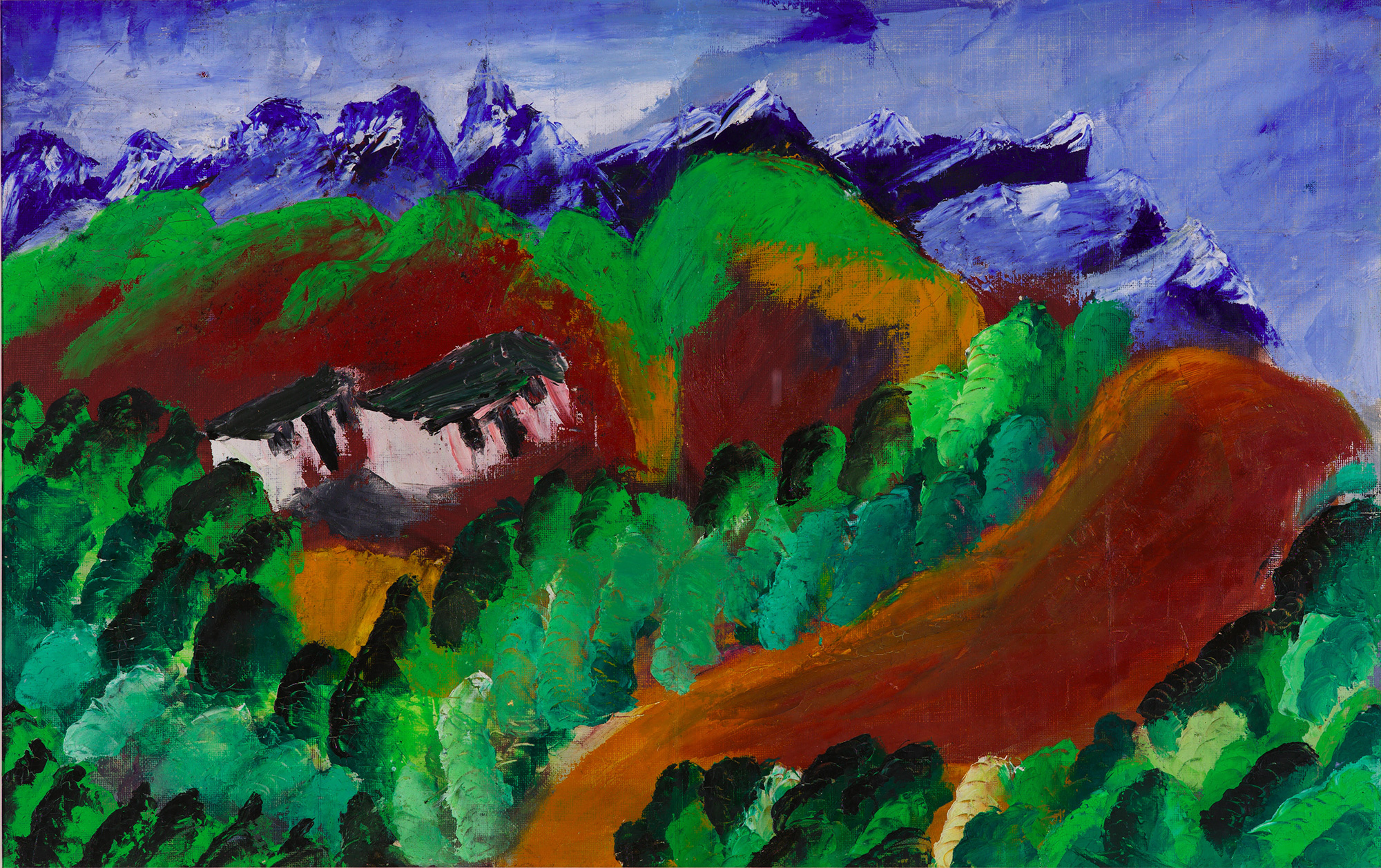Gladys Nomfanekiso Mgudlandlu (1917 – 1979)
BIOGRAPHY
Gladys Mgudlandlu was born in Peddie near Grahamstown (now Makhanda) and began her artistic practice in her childhood years, as a muralist and clay sculptor in the Xhosa tradition. She was raised mainly by her grandmother, who taught her traditional painting styles from their Xhosa and Fingo heritage, and about the birds native to their region.
In 1941, she qualified as a teacher at Lovedale College and, in the early 1940s, moved to the Cape Province (now Western Cape Province), where she had a long career as a teacher. She was also registered as a nurse-in-training in Cape Town in the 1940s. Mgudlandlu worked as an art teacher in Langa, Cape Town, at the Athlone Bantu Community School for more than a decade. However, when the Bantu Education Act of 1953 was enforced, Mgudlandlu was no longer allowed to teach at the school. Prior to dedicating herself to art full-time, she went to teach briefly at schools in Nyanga and Gugulethu. She would paint by paraffin lamp in her home at night after teaching, even after she had gained access to electricity.
Her professional painting career started in 1957, after the death of the grandmother who had raised her. Mgudlandlu draws from her rural childhood and depicts her memories of youth in a dream-like state. Her works feature rural landscapes, depictions of vibrant African villages and indigenous birds. She came to be referred to as uNontaka – the Bird Lady.
Mgudlandlu’s relationship with the art world was complex. She sold her work to a wealthy, white clientele who praised her as a naïve, folk or outsider artist painting rural scenes that they perceived as idyllic and pastoral.
In contrast, Bessie Head, a prominent writer and a part of the Black Consciousness movement in Southern Africa, criticised her work for its lack of engagement with the oppression of Black people living under the Apartheid government.
While Mgudlandlu’s paintings could be perceived as idealisations of the landscapes and people she depicts, a closer look shows that there is an intentional strangeness in these representations. Her aerial perspective, which she compared to the perspective of a bird flying overhead, can be interpreted as her own expression of dissatisfaction with these living conditions, and a desire for liberation.
Perhaps the charge that Mgudlandlu ignored the struggles of Black people in her work can be attributed to her own struggle to relate to others in the way that she was able to relate to nature. Even so, all art is political and a comparison of her township works with her depictions of rural areas make it clear what she thought about the Apartheid government’s forced removal of Black people from their expansive, rural homesteads to crowded, urban settlements. Of course, this messaging is not as direct as it is in the Resistance Art that we associate with the Black Consciousness movement.
One of the first African women in South Africa to hold a solo exhibition, Mgudlandlu was a pioneer in visual arts, for which she was given the Presidential Order of Ikhamanga in Silver.
A biography by Elza Miles, Nomfanekiso Who Paints at Night: The Art of Gladys Mgudlandlu was published in 2003. An exhibition of works by Mgudlandlu and Valerie Desmore, titled A Fragile Archive, was held at Johannesburg Art Gallery in 2012. Artist/filmmaker Kemang Wa Lehulere made The Bird Lady (2015), a short documentary about Mgudlandlu.


